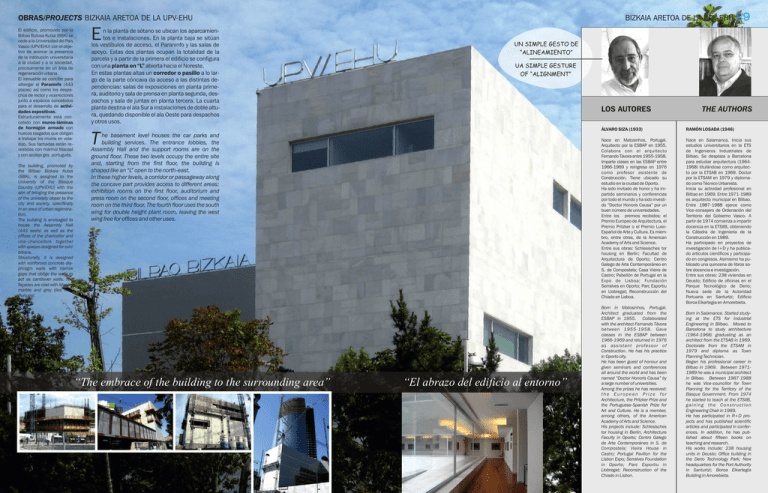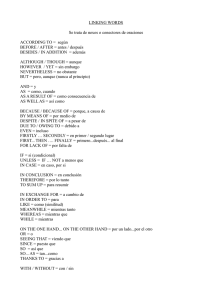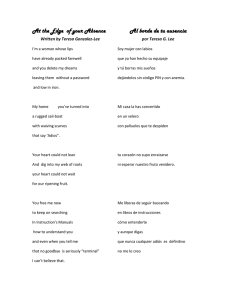“The embrace of the building to the surrounding area” “El abrazo del
Anuncio

BIZKAIA ARETOA DE LA UPV-EHU 29 OBRAS/PROJECTS BIZKAIA ARETOA DE LA UPV-EHU El edificio, promovido por la Bilbao Bizkaia Kutxa (BBK) se cede a la Universidad del País Vasco (UPV/EHU) con el objetivo de acercar la presencia de la institución universitaria a la ciudad y a la sociedad, precisamente en un área de regeneración urbana. El inmueble se concibe para albergar el Paraninfo (443 plazas) así como los despachos de rector y vicerrectores junto a espacios concebidos para el desarrollo de actividades expositivas. Estructuralmente está concebido con muros-láminas de hormigón armado con huecos rasgados que obligan a trabajar los muros en voladizo. Sus fachadas están revestidas con mármol Macael y con azulejo gris portugués. The building, promoted by the Bilbao Bizkaia Kutxa (BBK), is assigned to the University of the Basque Country (UPV/EHU) with the aim of bringing the presence of the university closer to the city and society, specifically in an area of urban regeneration. The building is envisaged to house the Assembly Hall (443 seats) as well as the offices of the chancellor and vice-chancellors together with spaces designed for exhibitions. Structurally, it is designed with reinforced concrete diaphragm walls with narrow gaps that oblige the walls to act as cantilever walls. The façades are clad with Macael marble and grey tiles from Portugal. E n la planta de sótano se ubican los aparcamientos e instalaciones. En la planta baja se sitúan los vestíbulos de acceso, el Paraninfo y las salas de apoyo. Estas dos plantas ocupan la totalidad de la parcela y a partir de la primera el edificio se configura con una planta en “L” abierta hacia el Noreste. En estas plantas altas un corredor o pasillo a lo largo de la parte cóncava da acceso a las distintas dependencias: salas de exposiciones en planta primera, auditorio y sala de prensa en planta segunda, despachos y sala de juntas en planta tercera. La cuarta planta destina el ala Sur a instalaciones de doble altura, quedando disponible el ala Oeste para despachos y otros usos. UN SIMPLE GESTO DE “ALINEAMIENTO” UA SIMPLE GESTURE OF “ALIGNMENT” LOS AUTORES T he basement level houses the car parks and building services. The entrance lobbies, the Assembly Hall and the support rooms are on the ground floor. These two levels occupy the entire site and, starting from the first floor, the building is shaped like an “L” open to the north-east. In these higher levels, a corridor or passageway along the concave part provides access to different areas: exhibition rooms on the first floor, auditorium and press room on the second floor, offices and meeting room on the third floor. The fourth floor uses the south wing for double height plant room, leaving the west wing free for offices and other uses. “The embrace of the building to the surrounding area” “El abrazo del edificio al entorno” THE AUTHORS ÁLVARO SIZA (1933) RAMÓN LOSADA (1946) Nace en Matosinhos, Portugal. Arquitecto por la ESBAP en 1955. Colabora con el arquitecto Fernando Távora entre 1955-1958. Imparte clases en las ESBAP entre 1966-1969 y reingresa en 1976 como profesor asistente de Construcción. Tiene ubicado su estudio en la ciudad de Oporto. Ha sido invitado de honor y ha impartido seminarios y conferencias por todo el mundo y ha sido investido “Doctor Honoris Causa” por un buen número de universidades. Entre los premios recibidos: el Premio Europeo de Arquitectura, el Premio Pritzker o el Premio LusoEspañol de Arte y Cultura. Es miembro, entre otras, de la American Academy of Arts and Science. Entre sus obras: Schlesisches tor housing en Berlín; Facultad de Arquitectura de Oporto; Centro Galego de Arte Contemporáneo en S. de Compostela; Casa Vieira de Castro; Pabellón de Portugal en la Expo de Lisboa; Fundación Serralves en Oporto; Parc Esportiu en Llobregat; Reconstrucción del Chiado en Lisboa. Nace en Salamanca. Inicia sus estudios universitarios en la ETS de Ingenieros Industriales de Bilbao. Se desplaza a Barcelona para estudiar arquitectura (19641968) titulándose como arquitecto por la ETSAB en 1969. Doctor por la ETSAM en 1979 y diplomado como Técnico Urbanista. Inicia su actividad profesional en Bilbao en 1969. Entre 1971-1989 es arquitecto municipal en Bilbao. Entre 1987-1988 ejerce como Vice-consejero de Ordenación del Territorio del Gobierno Vasco. A partir de 1974 comienza a impartir docencia en la ETSIIB, obteniendo la Cátedra de Ingeniería de la Construcción en 1989. Ha participado en proyectos de investigación de I+D y ha publicado artículos científicos y participado en congresos. Asimismo ha publicado una quincena de libros sobre docencia e investigación. Entre sus obras: 238 viviendas en Deusto; Edificio de oficinas en el Parque Tecnológico de Derio; Nueva sede de la Autoridad Portuaria en Santurtzi; Edificio Boroa Elkartegia en Amorebieta. Born in Matosinhos, Portugal. Architect graduated from the ESBAP in 1955. Collaborated with the architect Fernando Távora between 1955-1958. Gave classes in the ESBAP between 1966-1969 and returned in 1976 as assistant professor of Construction. He has his practice in Oporto city. He has been guest of honour and given seminars and conferences all around the world and has been named “Doctor Honoris Causa” by a large number of universities. Among the prizes he has received: the European Prize for Architecture, the Pritzker Prize and the Portuguese-Spanish Prize for Art and Culture. He is a member, among others, of the American Academy of Arts and Science. His projects include: Schlesisches tor housing in Berlin, Architecture Faculty in Oporto; Centro Galego de Arte Contemporáneo in S. de Compostela; Vieira House in Castro; Portugal Pavilion for the Lisbon Expo; Serralves Foundation in Oporto; Parc Esportiu in Llobregat; Reconstruction of the Chiado in Lisbon. Born in Salamance. Started studying at the ETS for Industrial Engineering in Bilbao. Moved to Barcelona to study architecture (1964-1968) graduating as an architect from the ETSAB in 1969. Doctorate from the ETSAM in 1979 and diploma as Town Planning Technician. Began his professional career in Bilbao in 1969. Between 19711989 he was a municipal architect in Bilbao. Between 1987-1988 he was Vice-councillor for Town Planning for the Territory of the Basque Government. From 1974 he started to teach at the ETSIIB, gaining the Construction Engineering Chair in 1989. He has participated in R+D projects and has published scientific articles and participated in conferences. In addition, he has published about fifteen books on teaching and research. His works include: 238 housing units in Deusto; Office building in the Derio Technology Park; New headquarters for the Port Authority in Santurtzi; Boroa Elkartegia Building in Amorebieta.








